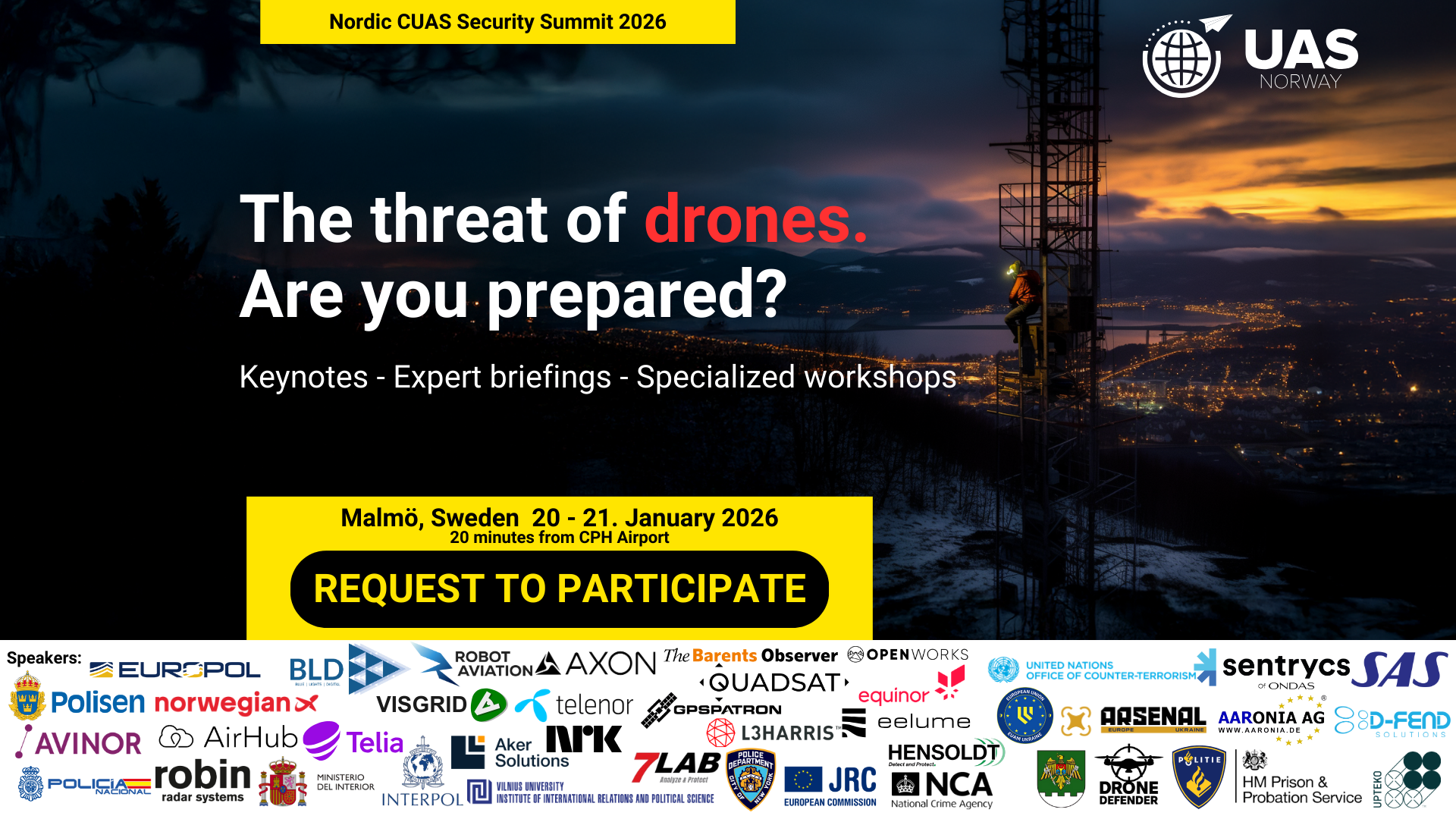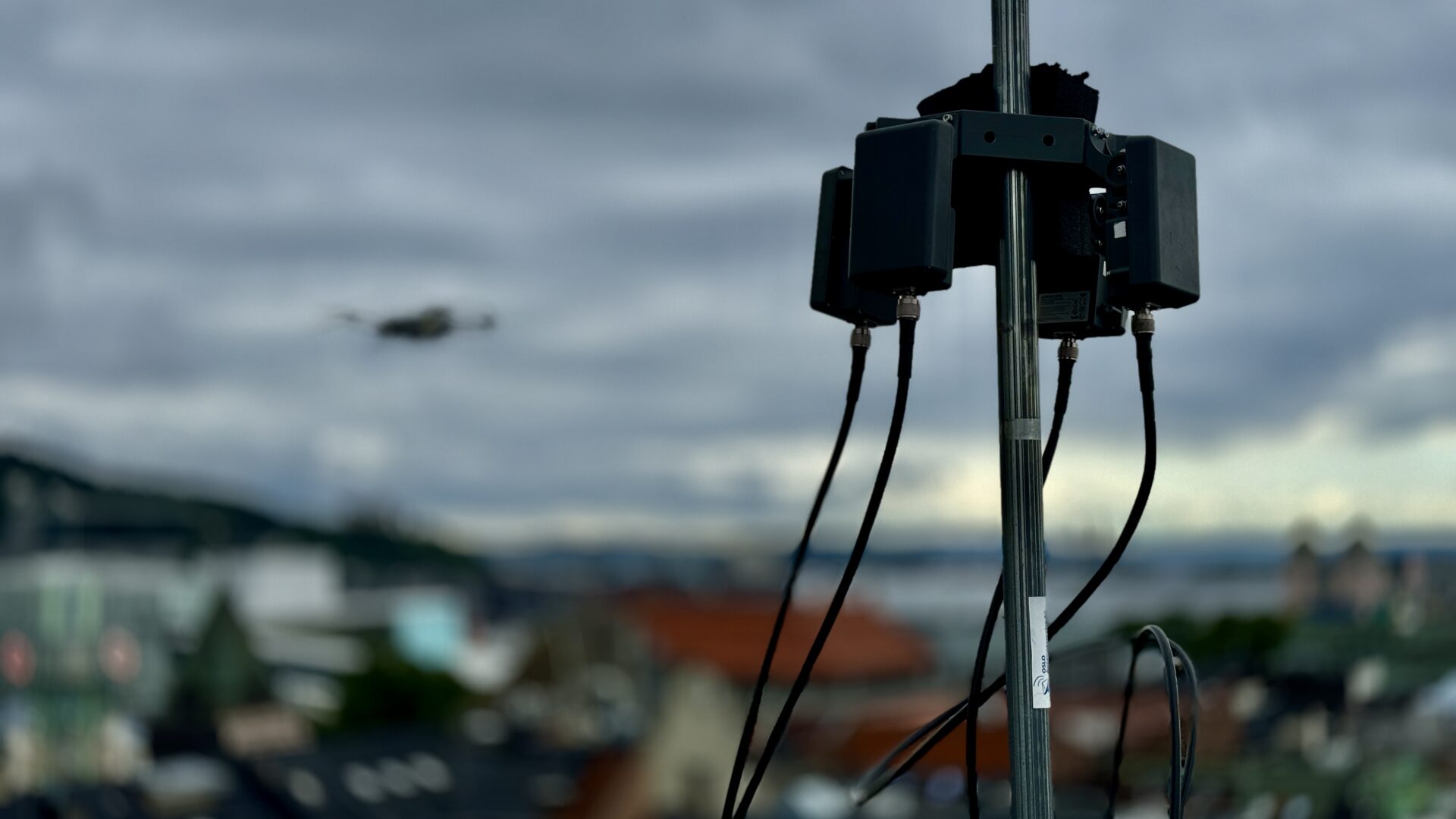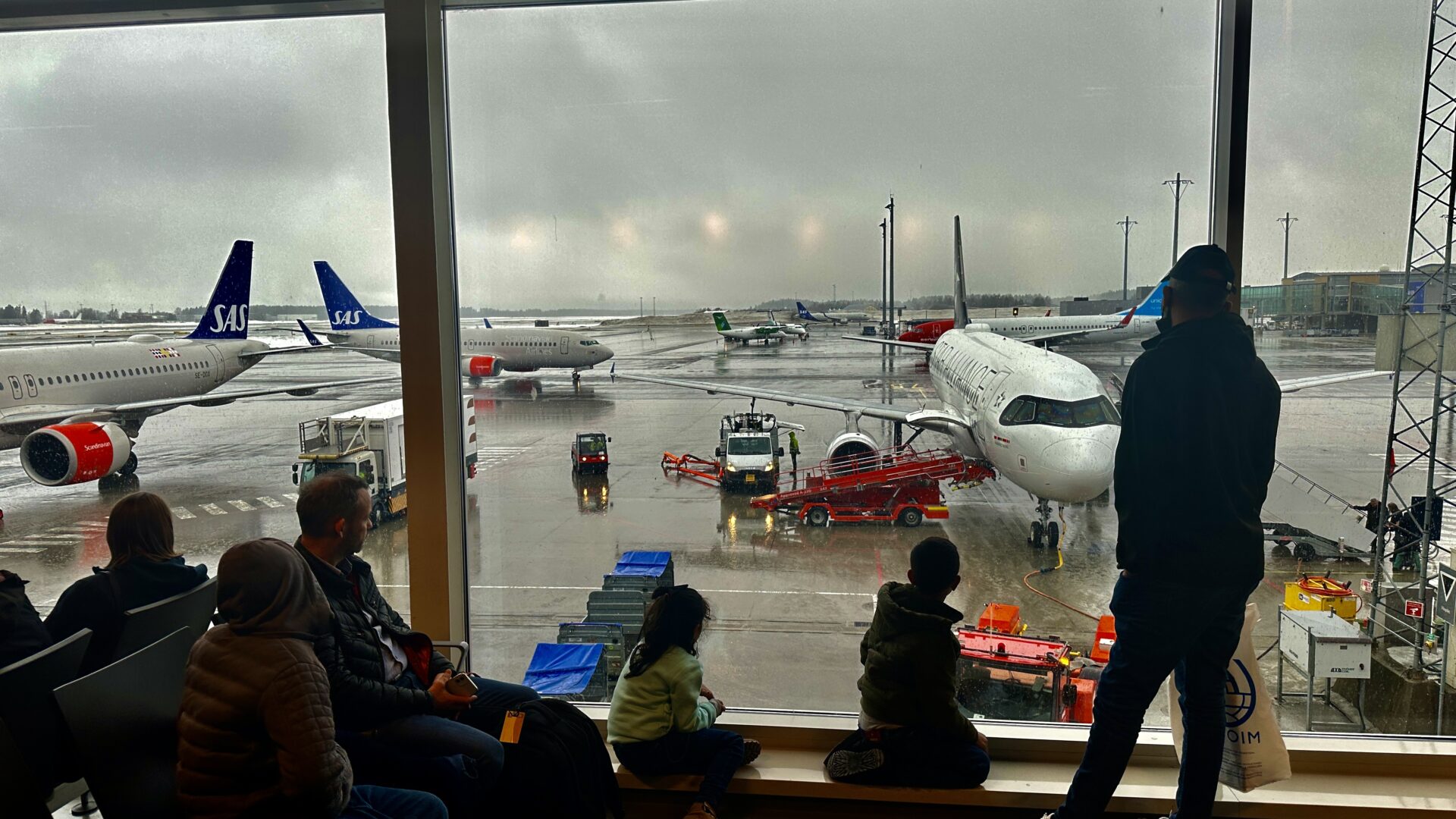
LOCATION
Venue: Turning Torso, Malmö, Sweden
City: Malmö, Sweden
Nearest airport: Copenhagen Airport (approximately 20 minutes from the venue)
The conference will take place inside the iconic Turning Torso in Malmö.
Access to the venue will involve a strict check in process, and entry is only permitted for participants with a confirmed and registered ticket.

RELEVANCE
The rise in unauthorized and hostile drone activity across Europe highlights an urgent and complex challenge for governments, industries, and security professionals. Drones are increasingly being used for surveillance, smuggling, and even disruptive or destructive operations near airports, ports, and critical infrastructure. As the airspace becomes more crowded and accessible, understanding how to detect, respond to, and regulate drone activity has never been more important. The Security Summit 2026 addresses these realities by bringing together the people, technology, and knowledge needed to protect what matters most.
READ MORE BELOW
SUGGESTED HOTELS IN THE AREA:
CUAS Security Summit 2026 – Drones, Detection & Defence
The CUAS Security Summit 2026 in Sweden (January 2026) is a closed, invitation-only event hosted by UAS Norway, bringing together leading experts, public agencies, infrastructure operators, and technology providers to explore how knowledge of the low-altitude airspace can both protect society and unlock the full potential of drones for legitimate, beneficial use.
Drones have become indispensable tools in emergency response, logistics, inspection, and environmental monitoring. Yet, the same airspace that enables innovation also introduces new vulnerabilities. When we lack awareness of what operates in this layer of the sky, we lose both control and opportunity.
Drones as a threat
This summit will go beyond discussions about “drones as threats.” Participants will explore a broader air-domain perspective that includes unmanned aerial and maritime systems, weather balloons, ultralight aircraft, and other airborne objects that can impact security and safety.
Central to the program is a detailed examination of the entire CUAS ecosystem — from early detection and threat classification, to countermeasures, and finally data handling and fusion that transform raw sensor inputs into actionable intelligence. By understanding this data lifecycle, participants will see how CUAS systems can not only protect against threats but also secure the airspace for lawful and socially beneficial operations.
The summit will draw on lessons from Ukraine and other nations that have developed comprehensive national detection networks. These experiences provide valuable insights into establishing “normal airspace patterns” — the baseline knowledge that helps distinguish between routine activity and potential anomalies or threats.
Through two intensive days of keynote sessions, expert briefings, and specialized workshops, the event will give participants a holistic understanding of how technology, policy, and operations intersect to maintain safety, sovereignty, and societal trust in an increasingly dynamic low-airspace environment.
———————————————————————————————————————————————————————
Key Themes
– The Complete CUAS Ecosystem: From early detection and identification to countermeasures, incident response, and data-driven airspace management — understanding how each layer contributes to both safety and operational freedom.
– Situational Awareness in the Low Airspace: How national detection networks and continuous monitoring can define a “normal picture” of airspace activity — the foundation for identifying anomalies, risks, and threats.
– From Threat to Enablement: How CUAS capabilities can not only neutralize risks but also enable secure drone operations that benefit emergency services, inspection, logistics, and public safety.
– Global Lessons Learned: Insights from Ukraine and other nations with long-standing detection programs — understanding what continuous observation teaches about patterns, intent, and proportional response.
– Hybrid and Cross-Domain Threats: Expanding beyond drones — examining the risks posed by weather balloons, ultralight aircraft, and unmanned maritime systems.
– Data Fusion and Decision Intelligence: Turning detection data into actionable insight — integrating radar, RF, EO/IR, and acoustic sensors into a coherent operational picture.
– Airspace Resilience and Societal Cost: Evaluating the economic and social impact of airspace closures — and how smarter management can maintain both safety and access to airspace.
– Policy, Ethics, and Governance: Balancing privacy, legality, and security in a world of expanding sensor coverage and increasing automation with AI.
———————————————————————————————————————————————————————
Learning Objectives
By the end of Security Summit 2026, participants will be able to:
1. Understand the structure and purpose of a complete CUAS ecosystem, from detection to data analysis to operational response.
2. Differentiate between benign and malicious aerial or maritime activity using situational awareness frameworks and defined “normal airspace patterns.”
3. Assess the societal and economic trade-offs between strict airspace control and the safe integration of beneficial drone operations.
4. Describe how nations like Ukraine and others have used long-term detection programs to improve security, refine response models
5. Evaluate data-handling challenges — including fusion, interpretation, and sharing — to improve decision-making across agencies and infrastructure sectors.
6. Apply multi-domain awareness concepts to coordinate air, land, and maritime responses to unmanned threats.
7. Design or procure CUAS capabilities strategically, understanding when, why, and how such systems should be deployed to protect critical infrastructure.
8. Promote a culture of learning and cooperation across civil, governmental, and industrial actors to strengthen resilience in low-altitude environments.

When the skies go silent: Who pays when airports stop for drones?
When the radio chatter falls silent and planes stop moving, airports count the cost of uncertainty. Drone-related shutdowns have exposed how fragile modern aviation becomes when even a hint of risk enters controlled airspace.
READ MORE HERE

The price of doubt: When drones challenge what we think we know
For years, the Nordic and Baltic skies have hosted a steady stream of “possible drone sightings.” Some have turned out to be false alarms; others remain unexplained. Each incident exposes the same problem — the cost of uncertainty in an era where seeing something doesn’t always mean knowing what it is.
READ MORE HERE

Countermeasures: Who acts, who decides and what actually works?
When an unidentified aircraft appears near an airport, power plant or public event, the instinct is simple: stop it. Reality is far more complex. Counter-drone measures range from passive detection to active neutralisation, but questions of responsibility, legality and safety make “shoot it down” far from an obvious answer.
READ MORE HERE

Detection vs. Disruption: The new frontier in counter-drone technology
As drone incidents multiply, the challenge is no longer about spotting them — it’s about preventing disruption. For airports, defence, and critical infrastructure, the next generation of counter-UAS technology must deliver clarity, not confusion.
READ MORE HERE

From panic to prediction: The AI advantage in counter-drone defence
For years, every drone alert meant panic. Now, artificial intelligence is turning chaos into comprehension — predicting risks before they unfold.
READ MORE HERE
Program
MAIN STAGE – KEYNOTES & PANELS
Day 1 – Tuesday 20 January
Hybrid threats, GNSS disruption & airspace resilience
Opening Remarks
Keynote 1: GNSS Vulnerability
Keynote 2: Hybrid conflicts and information warfare in the grey zone
Coffee break
Panel 1: Airspace under pressure – Regulation, ATM & Preparedness
Panel 2: CUAS in Airports – Lessons from major airports
Q&A and Summary
Lunch Break
Keynote 3: The evolving CUAS landscape – Technology, Law & Operations
Panel 3: Hard Kill vs Soft Kill – What works in civil contexts?
Coffee break
Keynote 4: Public safety & drone operations under stress
Panel 4: Law enforcement & intelligence – Detection to prosecution
Wrap-up panel: From awareness to resilience
Networking Dinner
Day 2 – Wednesday 21 January
Maritime & subsea security
Welcome Day 2
Keynote 5: Hybrid threats above and below the surface
Keynote 6: The offshore sector – should we worry about drones?
Coffee break
Panel 5: Protecting critical undersea infrastructure
Panel 6: Law enforcement from air to sea
Case discussion: Dark vessels and covert maritime drones
Lunch break
Keynote 7: Nordic maritime surveillance cooperation
Panel 7: Technology integration – Air, Sea & Subsea CUAS
Coffee break
Panel 8: Policy & Cooperation – The nordic response
Closing session: The way forward
EXPERT BRIEFINGS – TECHNOLOGY & EDUCATION TRACK
Day 1 – Tuesday 20 January
Airspace, GNSS & Counter-Drone Technologies
GNSS Jamming & spoofing – How it works
PNT Resilience – Building GNSS backup systems
Detect & Classify: Multi-Sensor Approaches
Airport CUAS Response Protocols
From detection to defeat – Soft kill technologies
Forensics & Attribution
Daily Wrap-Up
Day 2 – Wednesday 21 January
Maritime, Offshore & Subsea Security
Maritime drone operations & threat in the nordics
Dark vessels & hybrid warfare
Protecting critical undersea infrastructure
Maritime CUAS technologies
GNSS challenges in arctic operations
Incident management & cross-agency coordination
Future technologies: AI, RF analytics & autonomy +++
Closing Wrap-Up
Please note that this is a preliminary program and changes may occur.


